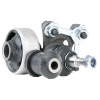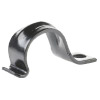
Control arm AUDI A2 rear and front

Control arm AUDI A2 models at best prices
- A2 8Z0
- AUDI A2 (8Z0) Control arm 02/2000 - 08/2005 Car body type: Hatchback
Control arm AUDI A2: useful information
-
Parts recommended for simultaneous replacement as part of a service kit
- Wiper blade
- Anti roll bar
- Shock absorber
- Anti-roll bar link
- Control arm repair kit
- Bolt, wishbone
- Track rod end
- Ball Joint
- Fastening Bolts, control arm
- Inner tie rod
- Ball Joint, axle strut
- Anti roll bar bush
- Repair kit, wheel suspension
- Trailing arm / Suspension arm bush
- Ball Head, gearshift linkage
- Bellow Set, drive shaft
- Wheel bearing kit
- Joint kit, drive shaft
- Minimum price £ 77,00
- Maximum price £ 212,00
Catalogue of manufacturers: Wishbone AUDI
Wishbone AUDI A2 and other car parts Suspension
What materials are suspension arms for the Audi A2 made from?
These components are most often made from cast iron, steel, or aluminium. Cast iron parts are robust and rigid but weigh a lot. Steel ones are characterised by crack resistance. Thanks to their resilience, they are good at absorbing shocks and reducing the strain on the suspension. They are repairable and usually allow for changing the bushings and ball joints. These parts are heavy and prone to corrosion.
Aluminium components are light and don’t rust. They make the suspension stiffer, giving the car a sports character. When they fail, they have to be replaced as an assembly.
What design do the components in this vehicle have?
Until 2003, the front axle of the car was fitted with wishbones with a bushing and a ball joint that was press-fitted in the part. The third end was attached to the bracket with the help of a metal-rubber bushing. Later versions are fitted with the components comprising a removable ball joint. Their design allows replacing these elements separately, which reduces the maintenance costs.
What are the most common failures of the suspension arms in the Audi A2?
Most often it is the ball joint that gets out of order. With time, its bearing and the spherical part of the ball stud wear out, causing play. The problem gets even worse if the dust boot is damaged: with water and dirt getting inside, the mating elements wear out much faster. Due to temperature changes, rubber components deteriorate, harden, and crack more quickly. As a consequence, they absorb shocks less effectively. The arm itself can be deformed when running over an obstacle or hitting a kerb with the wheel.
How do I know it’s time to replace the components?
The following indirect signs can indicate faulty parts:
- Deviation of the vehicle from the intended path when driving or braking.
- Loss of steering responsiveness and feedback.
- Knocking and grinding noises when driving.
- Squealing when manoeuvring.
- Uneven tread wear.
Inspection of the car on a service pit may reveal deformed components as well as cracked metal-rubber elements and dust boots. To measure the total free play, use a crowbar to swing the arm or get professional help at a garage.







































































